3 key collaborative features to engage data consumers with your data portal
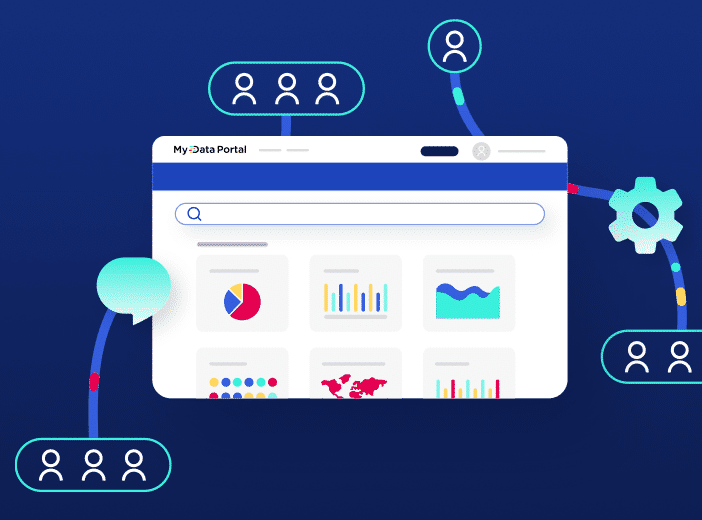
How can you break down silos and make data available to everyone within your organization, not just data specialists? How do you get employees to use data effectively in their everyday working lives? This article explains the key features you need on your data portal to engage users and maximize data sharing and reuse.
Data is everywhere in organizations, with increasing volumes of information generated by both enterprises and the public sector. However, simply collecting and storing data does not guarantee that it will be used effectively. Much data often remains untapped, meaning it doesn’t deliver value or generate ROI on investments in your data team and infrastructure. Deploying collaborative capabilities on your internal data portal or marketplace provide a powerful way of engaging your data consumers at scale. Here are three key features to add to your data portal to unlock the real value of your data.
1. Collaborative forms: involve consumers in publishing, collecting, and improving data quality
Beta testing is a central part of product development. It enables organizations to gather user feedback that helps to refine the product so that it is an exact match for their needs before it is officially launched. Beta testing also has an added benefit – it increases user engagement by actively involving them, creating a sense of ownership, and ensuring they will adopt the product for the long-term. Applying this same approach with data assets therefore creates shared value between producers and consumers, while increasing their engagement. For example, integrating collaborative forms into a data portal enables users to play a key role in publishing, collecting, enriching, and improving the quality of data. This not only improves the data itself, but also encourages regular use.
Given we live in a digital world, it is essential to provide data consumers and data producers with simple and intuitive digital tools that let them communicate and work together. Just as with beta testing, fluid and continuous collaboration, supported by regular feedback conversations, allows strategies to be adjusted to meet changing needs, driving long term engagement and usage.
Use data collection forms on your data portal to enrich your data assets
The Dunkirk Urban Community in Northern France has added a collaborative form on its data portal, allowing visitors to contribute directly to enrich its data, transforming them into data producers. For example, sports clubs can submit details of their activities, which are then added to the relevant dataset and map on the portal.
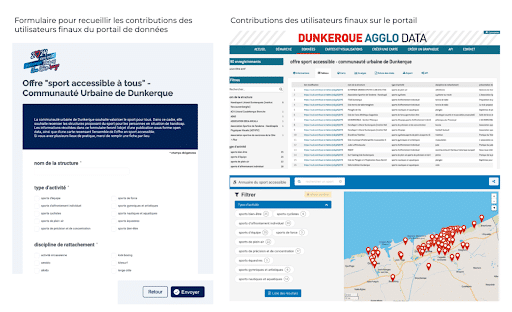
The French Ministry of National Education and Young People has also added two forms to its portal to optimize management of its projects. The first aims to collect input from internal stakeholders, while the second is aimed at the public, and gathers feedback on the redesign of its portal. Further increasing transparency, the ministry makes this feedback open and accessible through a dashboard on the portal itself.
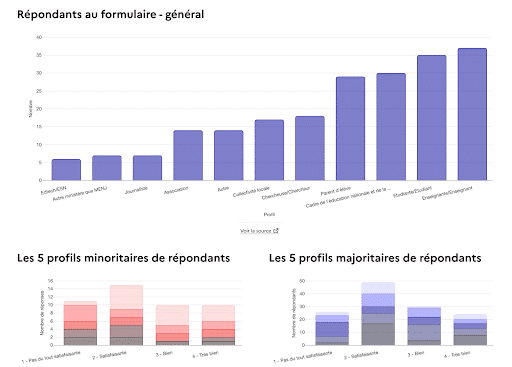
2. Sharing use cases: stimulate innovation through relevant and inspiring examples
Collaboration is essential to driving innovation, with the exchange of ideas and perspectives helping to create new solutions and improvements. However, in many organizations, data often remains confined within departmental silos, limiting the potential for collaboration and creativity. Equally, organizations can learn from the experiences of other organizations, whether in the same sector or not. For example, a marketing KPI dashboard can be useful for a sales team to help them model similar processes and focus sales strategies on the most receptive audiences. Essentially, the value of any data asset is multiplied when it is shared securely and in compliance with governance and confidentiality rules. This approach spans the private and public sector, where data sharing can inspire an entire community of users, developers, and businesses. By empowering data users to share, research, and be inspired by use cases, organizations can create momentum behind their data sharing, identify new opportunities, enrich decision-making, and foster innovative solutions.
Share use cases and data reuses on your data portal
Electricity distribution network and system operator UK Power Networks shares its data with a wide range of audiences, from renewable energy generators and EV charging station providers to local authorities. To encourage sharing of reuses of its data it has created a dedicated page which showcases how its data is being used by everyone from developers and researchers to councils and schools, while enabling new reuses to be submitted.
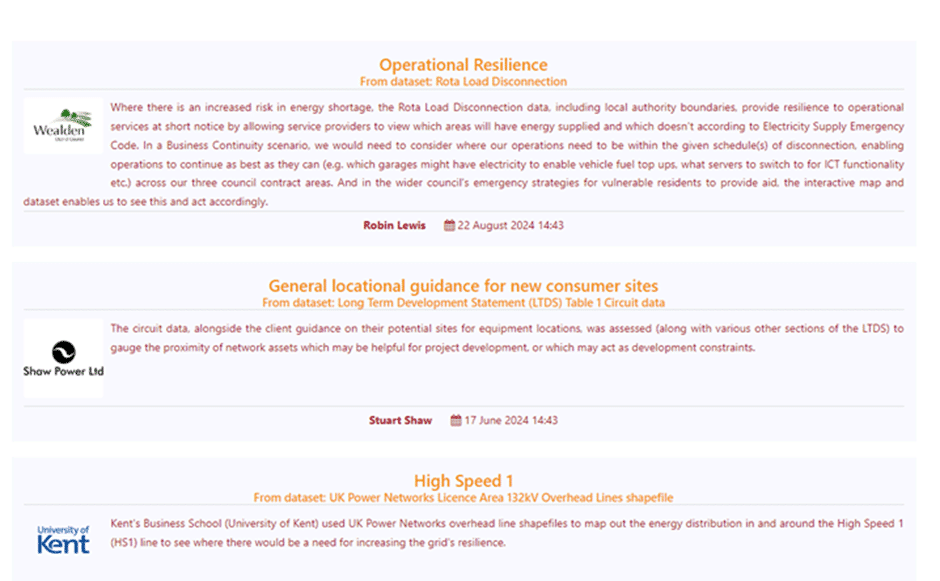
The canton of Basel-Stadt (Basel City) in Switzerland highlights reuses of its data directly from the main menu on its open data portal. Showing the breadth of its data and the innovation it is driving, it has 100 reuses available, covering everything from an index of the cleanest areas in the city to trends in energy consumption across the canton. Filterable by theme, dataset and other parameters, this provides ideas that can be adopted by other cities and municipalities, as well as encouraging a vibrant community around its data.
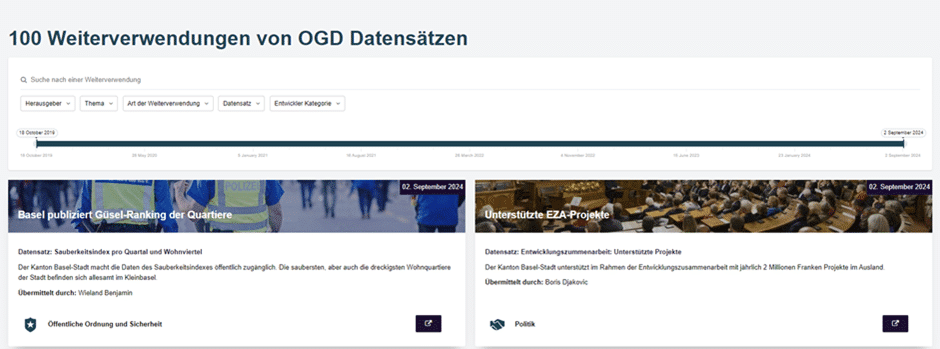
3. Data exchange and discussion: strengthen trust, listen to data requirements and enable direct collaboration
Checking reviews from other consumers – and leaving your own – is now part and parcel of buying from any e-commerce site. This feedback helps businesses understand what works and what doesn’t, improve products, and build transparency and trust with consumers. This same principle can be applied to data: when data teams publish information within an organization, they need to get feedback on those data assets. This makes it crucial that users can share their opinions in a simple, interactive and public way, directly commenting on specific data assets, to maximize transparency. Just as on an e-commerce site, these interactions allow data teams to better understand user expectations and improve the quality and relevance of the data they provide. At the same time, this fosters the creation of an active community where data producers and consumers can exchange ideas, collaborate, and build a reliable and dynamic data ecosystem, thus strengthening overall trust in data across the entire organization.
Offer a discussion space for your community on your data portal
To create discussion and feedback on its data, the French Ministry of Economy, Finance and Industrial and Digital Sovereignty includes a dedicated tab on each data asset enabling users to submit feedback and start conversations with its user community.
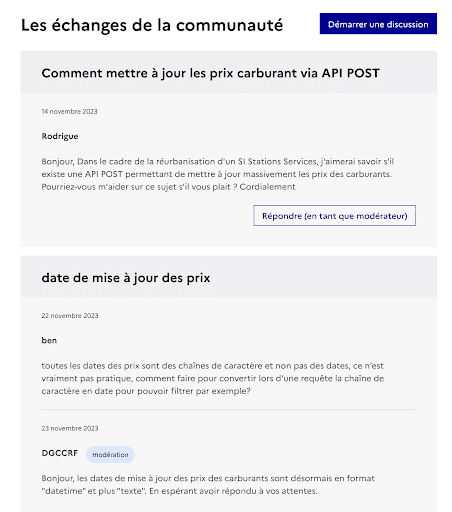
Encouraging collaboration on your data portal not only makes information more accessible, but also acts as a powerful driver to engage data consumers, build trust, and increase innovation. By actively involving users in creating, sharing, and improving data, organizations can not only unlock the hidden value of their information, but also turn previously passive users into key advocates who then accelerate the success of data projects.
Want to maximize the value of your data and encourage collaboration? Opendatasoft helps you quickly create data portals that enable the discovery and reuse of your data assets at scale, building a community around data. Book a demo of our solution here.
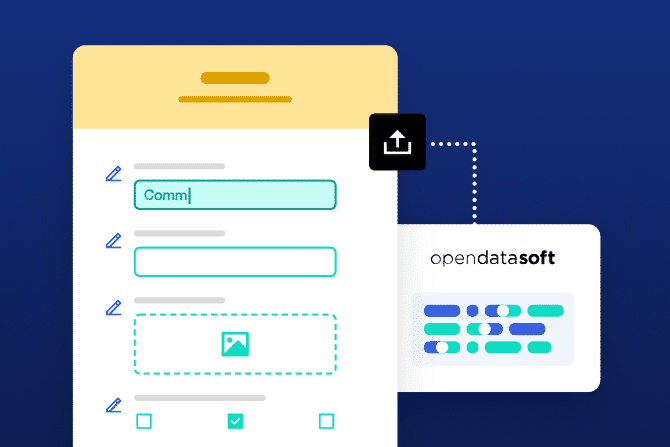
To improve the reliability and quality of the data in your data portals, Opendatasoft offers new data collection form functionality that automates the enrichment and updating of information, saving you precious time.

Organizational silos prevent data sharing and collaboration, increasing risk and reducing efficiency and innovation. How can companies remove them and ensure that data flows seamlessly around the organization so that it can be used by every employee?

